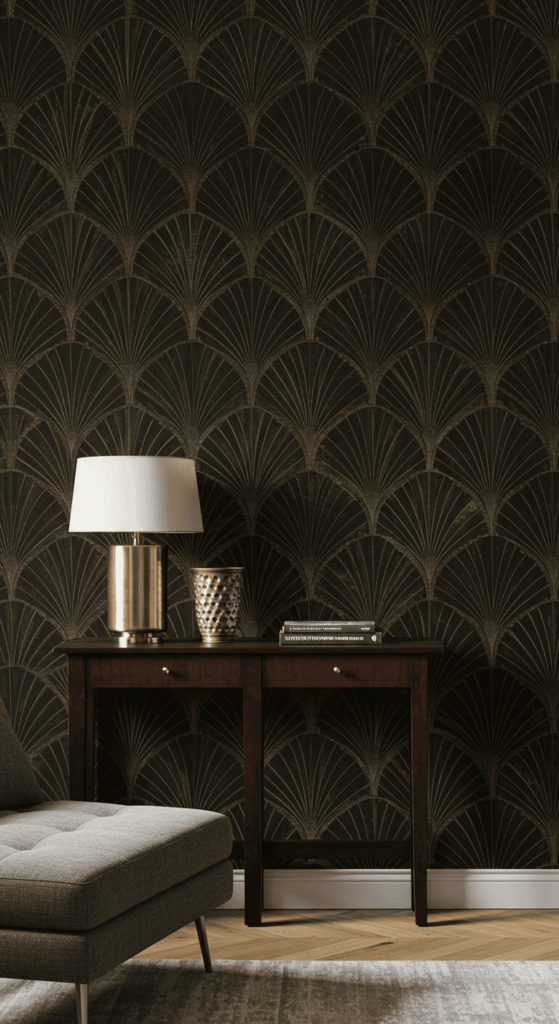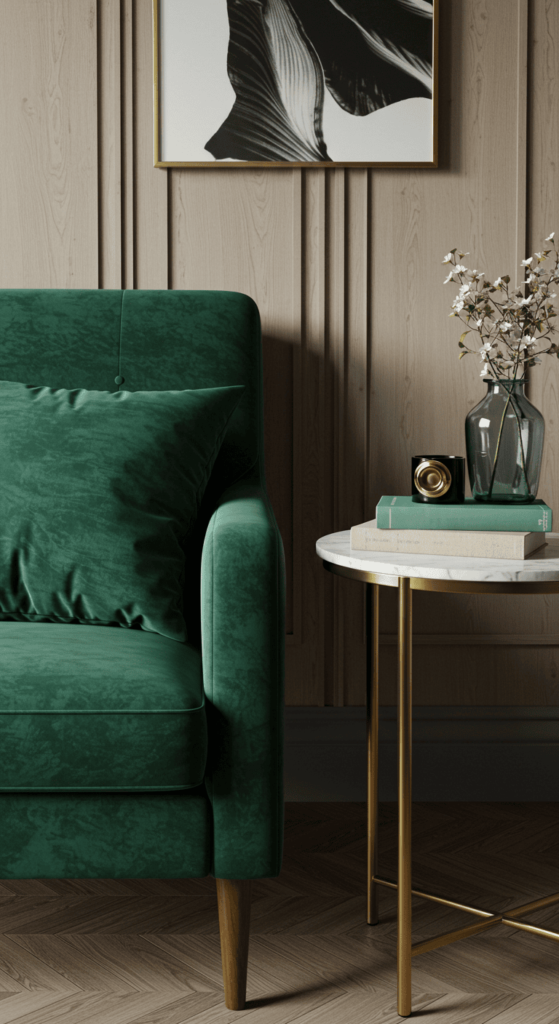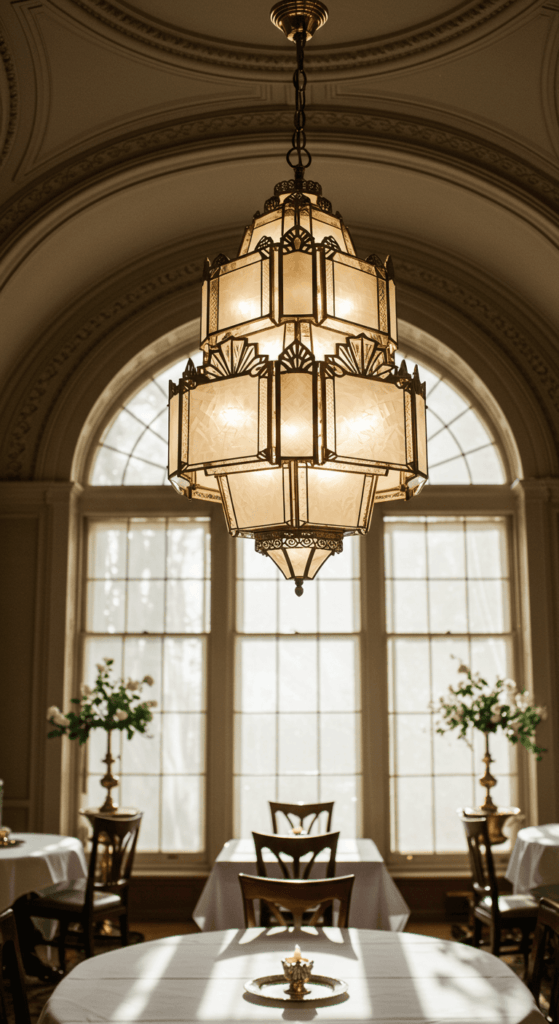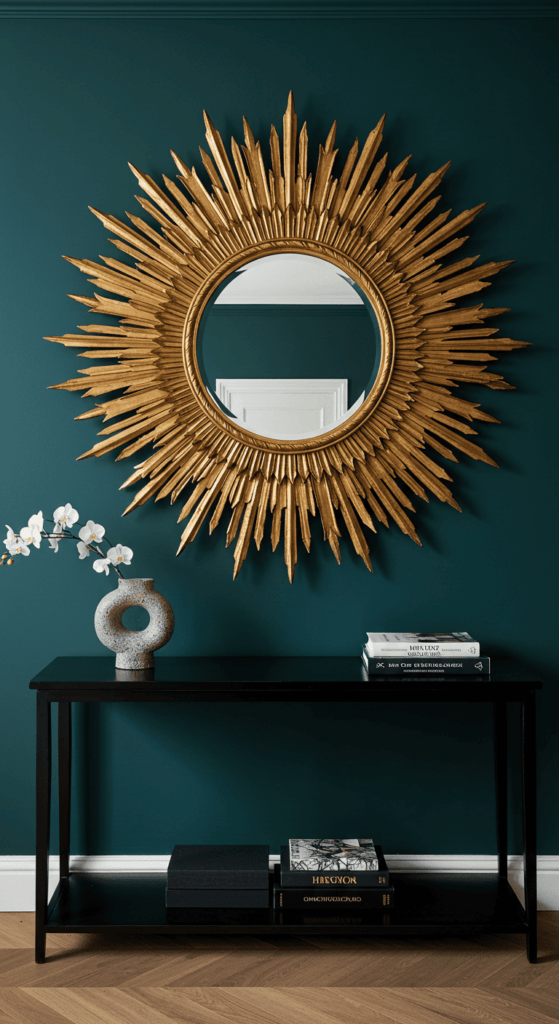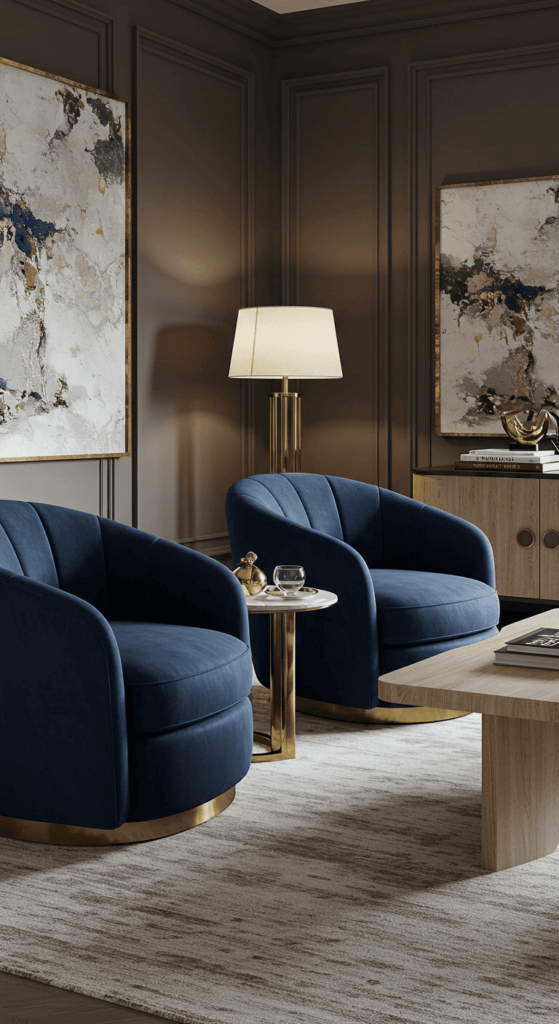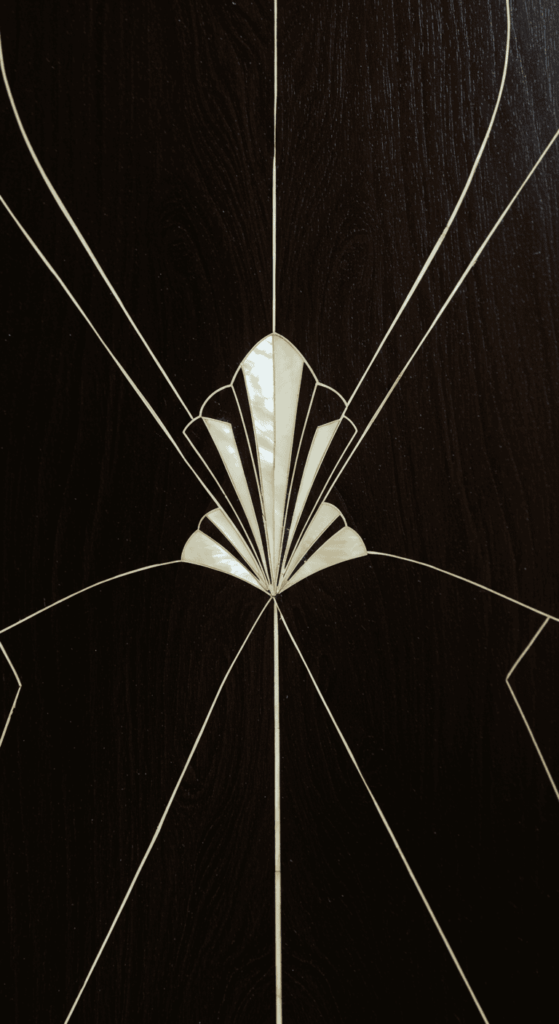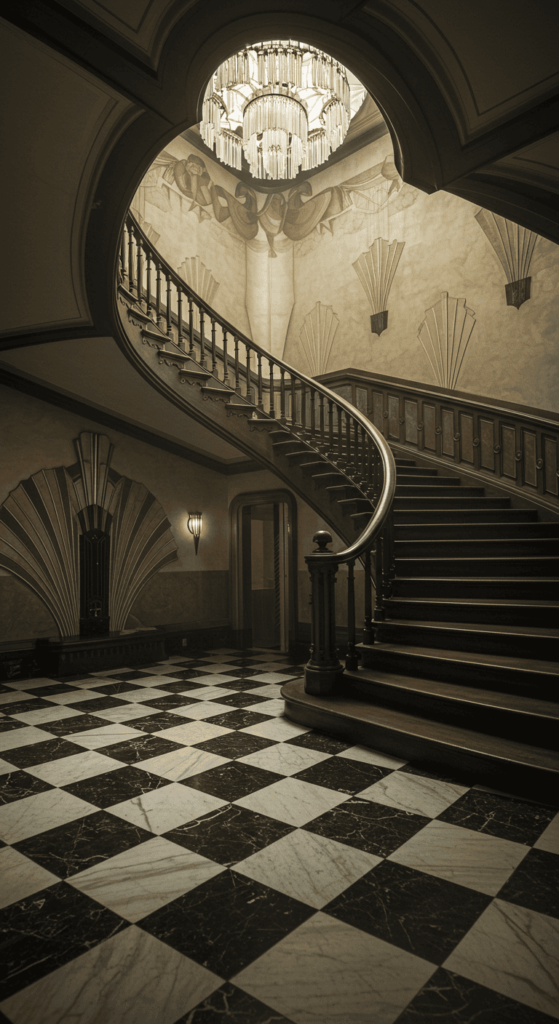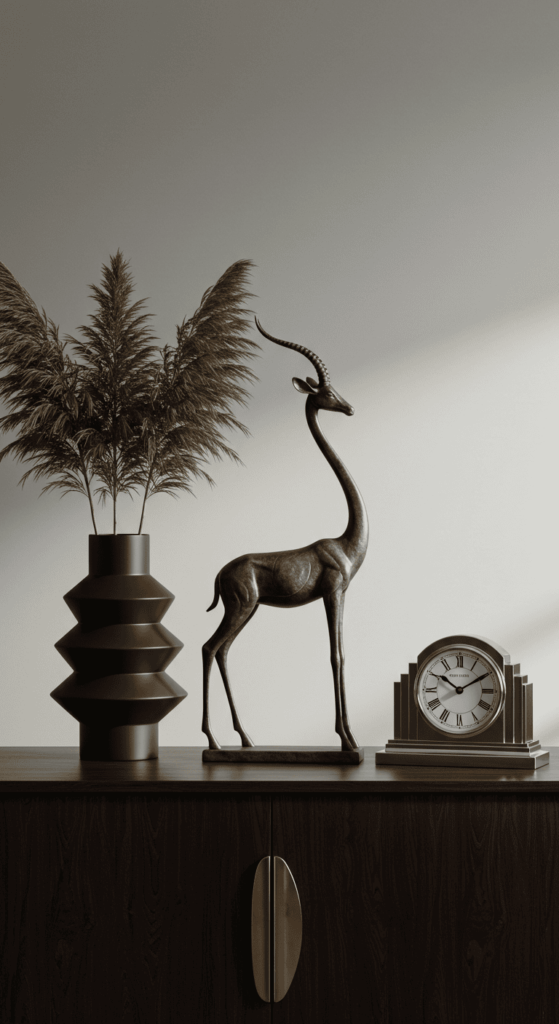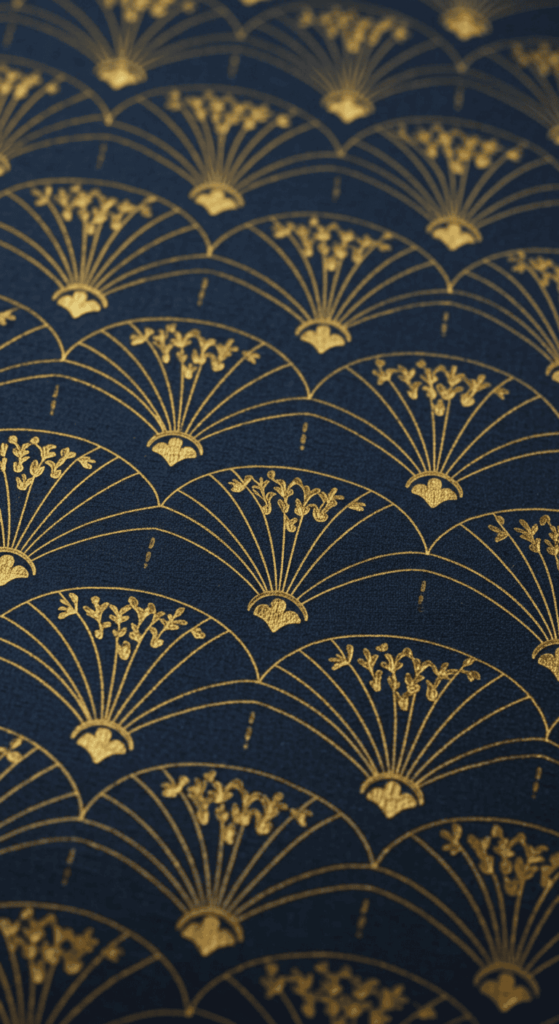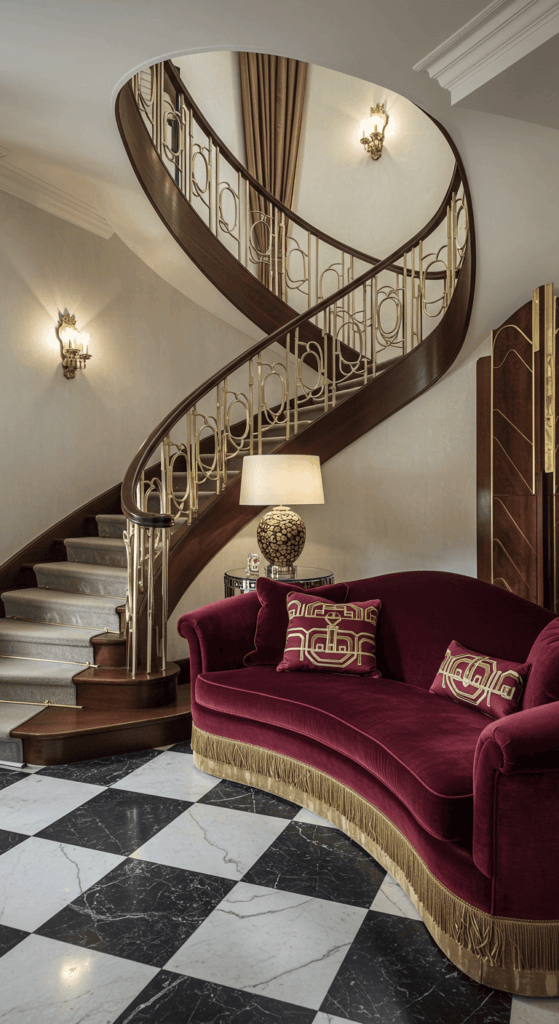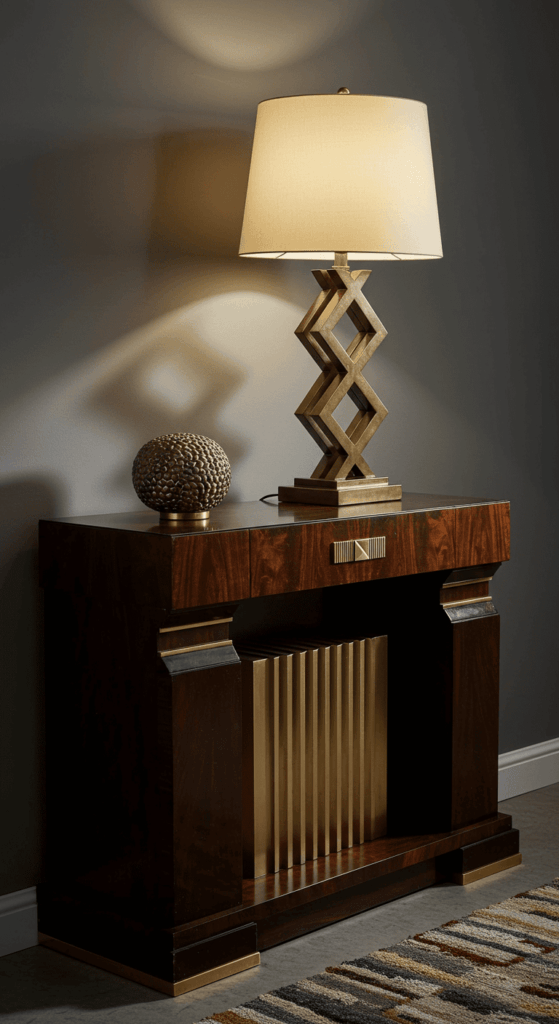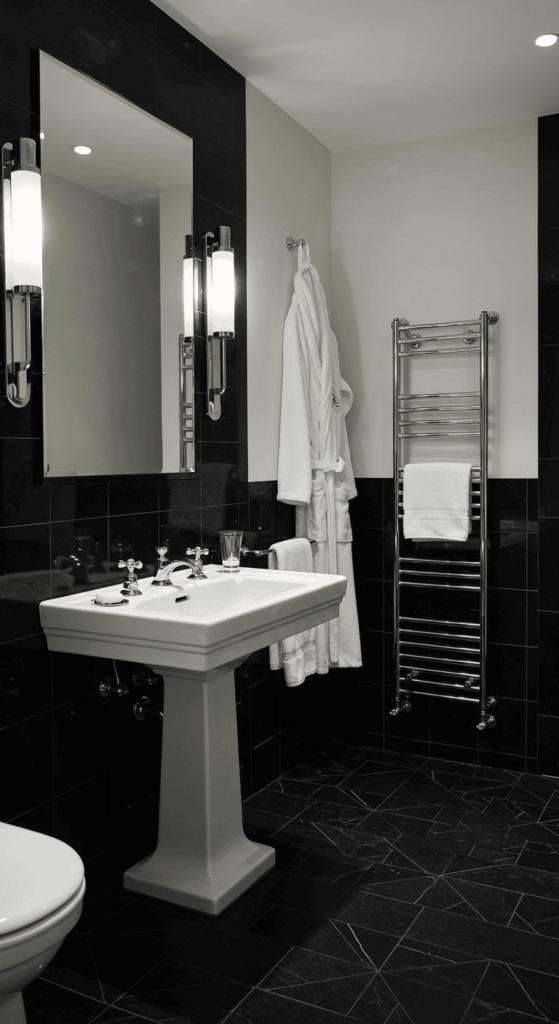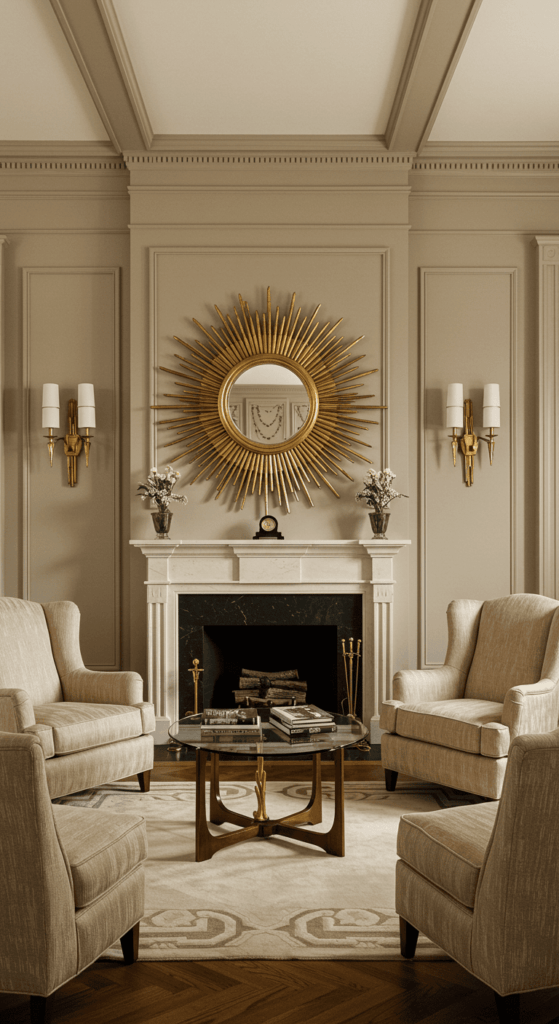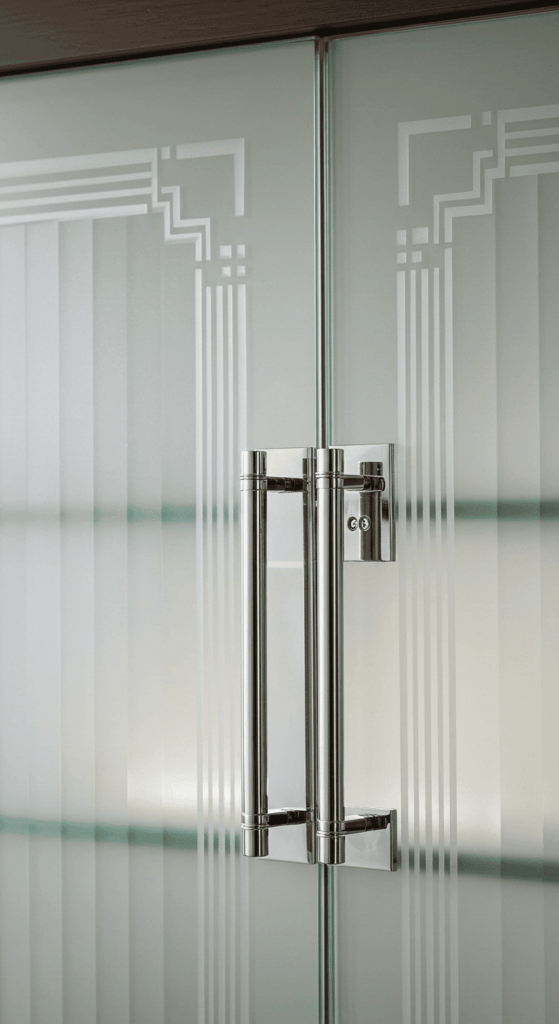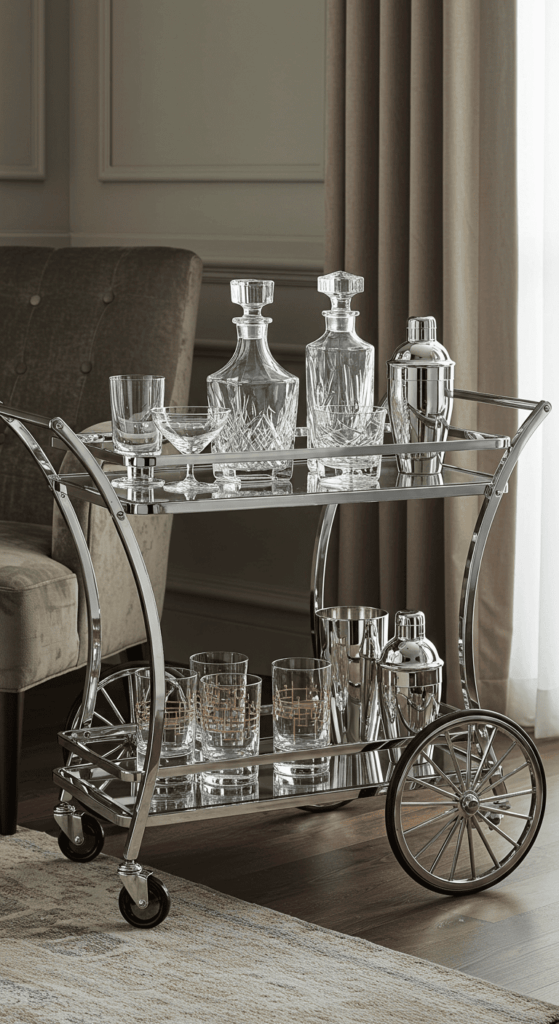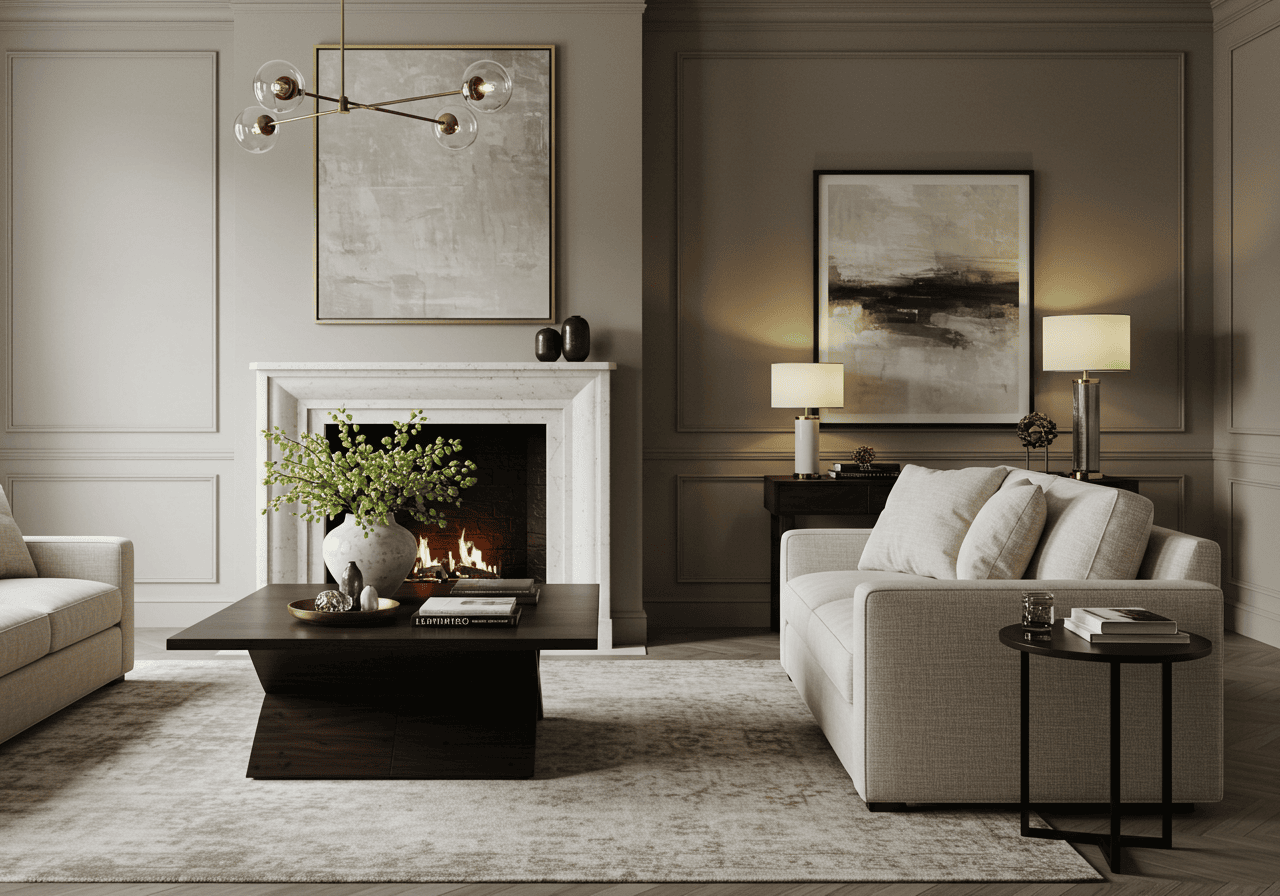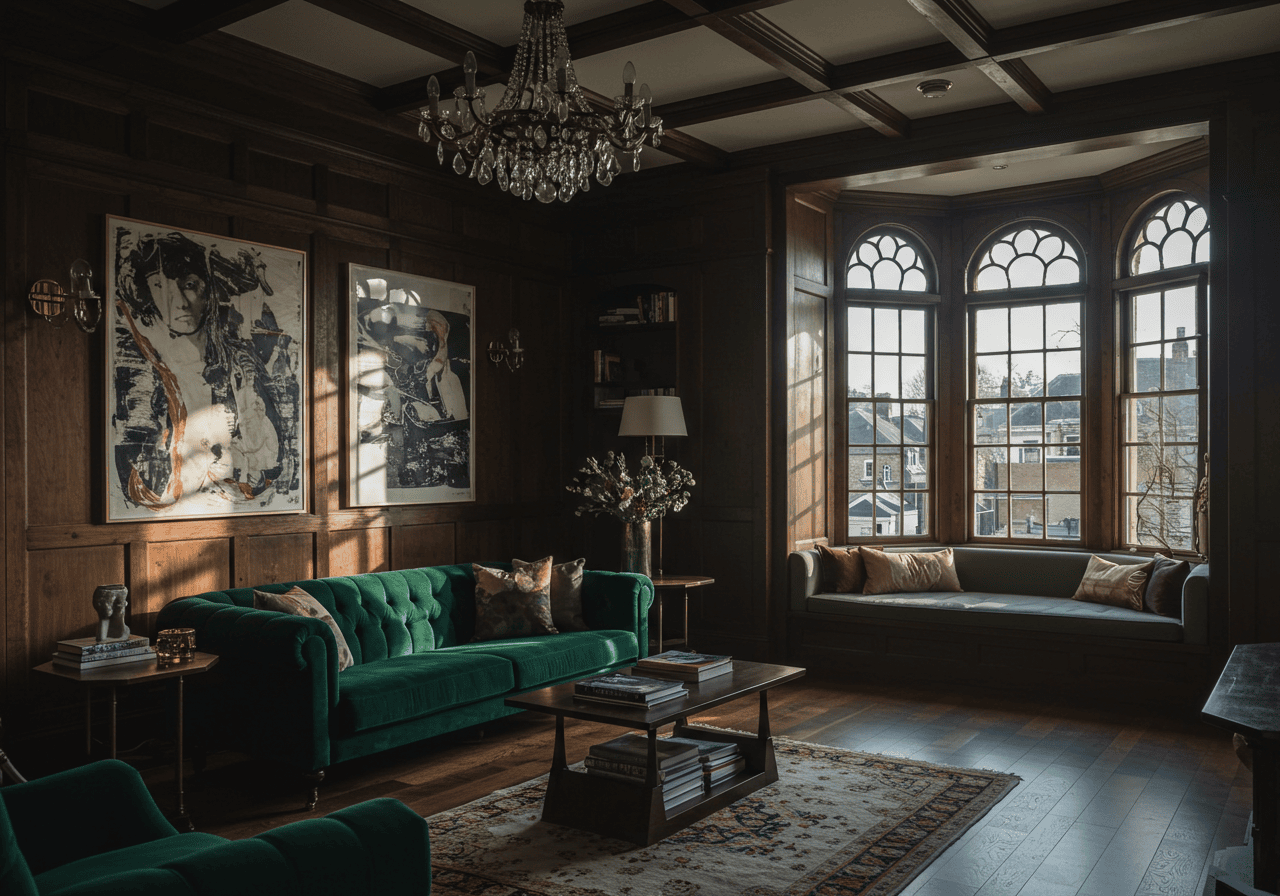Hey there, design lovers! Ever dream of stepping into a scene straight out of The Great Gatsby? That intoxicating blend of opulence, modernity, and pure, unadulterated glamour? That, my friends, is the magic of Art Deco. Born in the 1920s and flourishing through the 30s, this iconic style is all about celebrating life with bold shapes, luxurious materials, and a confident stride.
Forget fleeting trends; Art Deco is a timeless statement. It’s sophisticated yet fun, structured yet expressive. Ready to infuse your space with a little (or a lot!) of its dazzling energy? We’ve curated 21 Art Deco interior design ideas to inspire your journey. Let’s dive into the first few!
1. Embrace Bold Geometric Patterns
Art Deco loves geometry. Think sharp angles meeting graceful curves, repeating motifs, and patterns that command attention. We’re talking chevrons (zig-zags), sunbursts, stepped forms (like ziggurats), and intricate symmetrical designs.
- Why it works: These patterns reflect the machine age’s energy and a move towards modernity that defined the era. They add instant visual interest and a sense of structured dynamism.
- How to do it: Don’t be shy! Introduce geometric patterns through statement wallpaper on an accent wall, a striking area rug, bold throw pillows, or even inlaid details on furniture. Tiled floors or backsplashes in kitchens and bathrooms are also prime spots for Deco geometry.
2. Indulge in Luxurious Materials
This style is anything but bashful when it comes to materials. Art Deco revels in richness and contrast. Imagine smooth, cool marble juxtaposed with plush velvet, gleaming chrome or brass accents catching the light, and high-gloss lacquered surfaces reflecting the room. Exotic woods like ebony and zebrawood were also favourites.
- Why it works: These materials scream luxury and sophistication. They provide tactile and visual richness, making a space feel expensive and curated. The interplay of textures is key.
- How to do it: Incorporate a velvet armchair or sofa in a deep jewel tone. Use brass or chrome for lighting fixtures, cabinet hardware, and table legs. Consider a marble-topped coffee table or side table. Even small touches, like lacquered boxes or trays, can add that signature Deco sheen.
3. Make a Statement with Lighting
Forget recessed lighting as your main source. Art Deco lighting is meant to be seen – it’s practically jewelry for your room! Think tiered chandeliers dripping with crystals or frosted glass, sculptural sconces casting dramatic uplight, and table lamps with geometric bases and sleek shades. Metals like brass, chrome, and bronze are common.
- Why it works: Statement lighting acts as a focal point, enhances the luxurious feel, and helps create that specific, often moody, Art Deco ambiance. Frosted or etched glass diffuses light beautifully.
- How to do it: Invest in one knockout piece, like a spectacular chandelier for the dining room or entryway. Flank a mirror or doorway with stylish wall sconces. Choose table or floor lamps that embody the Deco aesthetic in their shape and materials.
4. Capture Radiance with Sunburst Motifs
If one symbol screams Art Deco, it’s the sunburst. Representing optimism, energy, and the dawn of a new age, this radiant motif appears everywhere – from mirrors and clocks to architectural details and fabric patterns.
- Why it works: It’s instantly recognizable and adds a touch of pure Deco glamour and dynamic energy. It draws the eye and serves as a brilliant focal point.
- How to do it: The easiest way is with a classic sunburst mirror – hang one above a console table, fireplace, or bed. Look for clocks, decorative boxes, or even hardware featuring the motif. Subtle variations might appear in rug patterns or etched glass.
5. Choose Streamlined & Curvaceous Furniture
Art Deco furniture is known for its bold silhouettes. Pieces often feature strong, streamlined shapes, but with softened edges and seductive curves. Think barrel chairs, waterfall-edge tables (where the surface curves down the sides), and sofas with elegant, often channel-tufted, backs. Surfaces might be lacquered wood, rich upholstery (like velvet or leather), or feature metallic or exotic wood inlays.
- Why it works: The combination of sleek lines and curves creates a look that is both modern and invitingly elegant. It’s substantial without being overly fussy.
- How to do it: Look for pieces with distinctive shapes. A curved sofa, a pair of club chairs with rounded backs, or a stepped-design bookcase can anchor your Art Deco look. Don’t overcrowd the room; let each statement piece breathe.
6. Play with Rich, Contrasting Color Palettes
While neutrals like cream, beige, and black provide a sophisticated base, Art Deco isn’t afraid of bold, dramatic color. Think deep jewel tones – emerald green, sapphire blue, ruby red, amethyst purple, and canary yellow – often contrasted sharply with black, white, or metallics (especially gold).
- Why it works: The high contrast creates drama and highlights the geometric shapes and luxurious materials. Jewel tones add depth and opulence.
- How to do it: Choose a bold color for an accent wall or a large furniture piece like a sofa. Use black and white for graphic impact in tiles or textiles. Sprinkle gold or brass accents generously throughout the space for that essential touch of glimmer. While Art Deco loves bold statements, it’s often more curated than pure Maximalism home decor, focusing on specific, impactful choices rather than an overwhelming abundance.
7. Incorporate Reflective Surfaces
Shine bright! Art Deco adores surfaces that bounce light around, enhancing the feeling of glamour and spaciousness. Think mirrors (especially those with geometric or decorative frames), high-gloss lacquer finishes, polished chrome, glass tabletops, and even mirrored furniture pieces.
- Why it works: Reflective surfaces amplify light, making spaces feel larger and more luxurious. They interact beautifully with statement lighting and add that essential Deco sparkle.
- How to do it: Beyond the classic sunburst mirror, consider a large, geometrically framed mirror as a focal point. Use lacquered finishes on console tables, sideboards, or cabinets. Glass tops on coffee or side tables keep things feeling light. Even small touches like polished chrome hardware or mirrored trays contribute.
8. Feature Exotic Woods and Inlays
The Art Deco era embraced global exploration and newfound materials. Exotic woods with striking grains, like Macassar ebony, rosewood, zebrawood, and bird’s-eye maple, were highly prized. Often, these were used as veneers or incorporated as intricate inlaid details on furniture, creating stunning patterns and contrasts.
- Why it works: These woods add unparalleled richness, texture, and a sense of worldly sophistication. The inlay work showcases craftsmanship and adds another layer of geometric or stylized detail.
- How to do it: Look for furniture pieces – sideboards, cabinets, accent tables – featuring veneers of these distinctive woods. Even smaller decorative boxes or trays with wood inlay can capture the essence. Contrast these darker, richer woods with lighter elements or metallics.
9. Don’t Forget the Floor!
Flooring in Art Deco design is far from an afterthought. Think highly polished wood floors (often laid in herringbone or chevron patterns), dramatic black and white checkerboard tiles (especially in entryways and bathrooms), or luxurious marble with geometric inlays. Plush, patterned area rugs are also key.
- Why it works: The floor provides a foundational element of the design scheme. Bold patterns or high shine underfoot anchors the room’s luxurious feel and geometric focus.
- How to do it: If renovating, consider bold tile patterns or polished hardwood. If not, invest in a statement area rug featuring classic Deco motifs – geometric shapes, stylized florals, or bold chevrons – in a rich color palette. Ensure the rug complements, rather than competes too fiercely with, other patterns in the room. While different in vibe, focusing on foundational elements like flooring is important across styles, even something as distinct as Shabby Chic has its signature floor treatments.
10. Accessorize with Sculptural Objects
Art Deco celebrated form and artistry. Decorate your surfaces with sculptural pieces that echo the era’s aesthetic. Think sleek, stylized figures (human or animal), geometric vases, elegant clocks with strong lines, and decorative boxes made from luxe materials. Bronze, chrome, glass, and ceramic were popular mediums.
- Why it works: These accessories act as mini-statements, reinforcing the overall theme and adding points of interest. They showcase the era’s fascination with speed, modernity, and stylized forms.
- How to do it: Choose a few carefully selected pieces rather than cluttering surfaces. Look for items with strong silhouettes, metallic finishes, or geometric influences. Place them strategically on mantels, console tables, or bookshelves where they can be appreciated.
11. Embrace Stylized Natural Motifs
While geometry reigned supreme, Art Deco also drew inspiration from nature, but in a highly stylized and simplified way. Think fans, shells, feathers, flowers (especially lilies or roses), and animal forms (like gazelles or panthers), all rendered with sharp lines, symmetry, and often a touch of the exotic.
- Why it works: These motifs soften the sometimes-harsh geometry while still feeling distinctly modern and decorative. They add elegance and a connection to the organic world, interpreted through a Deco lens.
- How to do it: Look for these motifs in textiles (cushions, curtains), wallpaper patterns, decorative friezes, lamp bases, or as sculptural elements. A fan-shaped mirror or headboard is a classic choice. Even subtle details on hardware can incorporate these stylized forms. This differs greatly from the often raw, natural elements seen in styles like Modern Coastal decor, showcasing Deco’s unique interpretation.
12. Layer Textures for Depth
We mentioned luxurious materials earlier, but layering different textures is crucial for creating a truly inviting Art Deco space. Combine smooth with rough, hard with soft, matte with shiny. Think velvet upholstery against a lacquered screen, a metallic lamp on a wooden table, or a smooth marble floor topped with a plush geometric rug.
- Why it works: Layering textures adds visual weight, depth, and tactile interest. It prevents the space from feeling flat or one-dimensional, enhancing the overall sense of luxury and considered design.
- How to do it: Be intentional about combining textures. Place a faux fur throw over a sleek leather chair. Use cushions in different materials (velvet, silk, embroidered fabrics) on a sofa. Contrast smooth walls with textured wallpaper or curtains. Even adding houseplants introduces an organic texture.
13. Introduce Stepped Forms & Ziggurat Shapes
Inspired by ancient Egyptian and Mesopotamian architecture discovered during the era, stepped forms, pyramids, and ziggurat shapes became iconic Art Deco elements. You’ll see these angular, ascending forms in everything from skyscraper designs (like the Chrysler Building) to furniture details, mirror frames, and lighting fixtures.
- Why it works: These shapes add architectural interest and a sense of grandeur and height, even on a small scale. They are distinctly Deco and immediately evoke the period’s fascination with monumental forms.
- How to do it: Look for mirrors with stepped frames, bookcases or display cabinets with staggered shelving, or table lamps with ziggurat-style bases. Even subtle architectural details, like stepped crown molding, can hint at the style. These elements provide structure without being overly complex.
14. Utilize Bold Black Accents
While gold and chrome provide the sparkle, black provides the sophisticated anchor in many Art Deco schemes. Used strategically, it creates striking contrasts, defines shapes, and adds a touch of undeniable drama and elegance. Think black lacquer, black upholstery, black picture frames, or black details within geometric patterns.
- Why it works: Black grounds the often vibrant colors and gleaming metallics. It adds graphic punch and highlights the clean lines and bold forms characteristic of the style. It’s timelessly chic.
- How to do it: Incorporate black through key furniture pieces (a lacquered sideboard, leather club chairs), accent walls, bold patterned rugs or tiles (like the classic black-and-white floor), or smaller details like vase silhouettes, lamp shades, or picture frames against lighter walls.
15. Opt for Symmetry and Balance
Underlying the opulence and geometric playfulness of Art Deco is often a strong sense of symmetry and order. Arrangements tend to be balanced, creating a feeling of harmony and intention. Think pairs of chairs, matching lamps flanking a sofa or bed, or centered arrangements on mantels and console tables.
- Why it works: Symmetry provides a calming counterpoint to the style’s bold elements. It creates a sense of formality, elegance, and purposeful design, making the space feel cohesive and well-planned.
- How to do it: Arrange furniture symmetrically where possible – place matching armchairs opposite a sofa, use identical bedside tables and lamps. Center artwork or mirrors above key furniture pieces. Even small decorative objects can be arranged in balanced pairs.
16. Don’t Shy Away from Animal Prints (Stylized!)
Reflecting the era’s fascination with the exotic and glamorous safaris, animal prints found their way into Art Deco interiors. However, these weren’t necessarily the hyper-realistic prints popular today. Think stylized zebra, leopard, or tiger patterns, often rendered in luxurious textures like velvet or faux fur, or used as accents.
- Why it works: Animal prints add a touch of wild sophistication and undeniable glamour. Used sparingly, they provide texture, pattern, and a hint of daring adventure perfectly suited to the Deco spirit.
- How to do it: Use animal print as an accent. Think throw pillows on a solid-colored sofa, an upholstered ottoman, a stylish area rug under a coffee table, or even framed art featuring stylized animal motifs. Keep it chic, not overwhelming.
17. Consider Etched or Frosted Glass Details
Beyond clear glass, Art Deco made extensive use of etched and frosted glass, often featuring geometric patterns, stylized florals, or linear designs. This could be found in lighting fixtures, cabinet doors, room dividers, or decorative panels.
- Why it works: Etched and frosted glass diffuses light beautifully, creating a soft glow and adding decorative detail without sacrificing brightness. It adds a layer of texture and visual interest while maintaining an air of sophistication.
- How to do it: Look for pendant lights or chandeliers featuring frosted glass panels. Seek out vintage or reproduction cabinets with etched glass doors. Consider using decorative frosted glass film on windows or glass partitions for privacy and style. Even simple ribbed or reeded glass fits the aesthetic.
18. Create a Dramatic Entryway
First impressions count, and Art Deco knows how to make an entrance! Your foyer or entryway is the perfect place to go bold and set the tone for the rest of your home. Think statement flooring, a dramatic mirror, sculptural lighting, a sleek console table, and perhaps even bold wallpaper.
- Why it works: The entryway immediately establishes the home’s style and ambiance. A strong Art Deco statement here signals luxury, confidence, and attention to detail right from the threshold.
- How to do it: Combine several key Deco elements: maybe a black and white tiled floor, a large sunburst mirror, elegant sconces, and a lacquered console. Even in a small space, a striking light fixture and a geometrically patterned runner can make a big impact. This focus on creating a specific mood shares some DNA with styles like Dark Academia decor, though the aesthetics are worlds apart.
19. Roll Out the Bar Cart (or Cabinet!)
The Roaring Twenties were synonymous with cocktails and sophisticated entertaining, making a stylish bar cart or dedicated drinks cabinet an almost essential Art Deco element. Look for designs featuring chrome, brass, glass shelves, mirrored backs, rich wood veneers, or geometric inlay.
- Why it works: It’s functional and fabulously decorative, embodying the era’s spirit of social elegance and celebration. It provides a perfect spot to display beautiful glassware and bar tools.
- How to do it: Choose a cart or cabinet that complements your existing materials and shapes. Style it with vintage-inspired cocktail shakers, crystal decanters, metallic ice buckets, and elegant glassware. Even if you don’t drink alcohol, it can serve as a chic display for sparkling water, fancy sodas, or even a collection of perfumes or objets d’art.
20. Embrace Architectural Curves & Arches
While sharp geometry is key, Art Deco also loved graceful curves and arches. Think arched doorways, curved walls or niches, rounded windows, or furniture with smooth, flowing lines. These shapes soften the angularity and add a touch of fluid elegance.
- Why it works: Curves provide visual relief and contrast to the straight lines and sharp angles. They add architectural interest and a sense of sophisticated flow, guiding the eye smoothly through the space.
- How to do it: If you’re renovating, consider incorporating arched doorways or building curved niches for display. If not, mimic the effect with arched mirrors, curved headboards, round tables, or by painting arches directly onto the wall for a trompe-l’oeil effect. Furniture placement can also create curved pathways.
21. Dive into Deco Drama: Mastering the Colour Palette
Colour in Art Deco isn’t an afterthought; it’s a powerful tool used with bold intention to create drama, sophistication, and unmistakable atmosphere. Forget wishy-washy pastels – this style embraces richness and contrast.
- Why it works: The Art Deco colour palette establishes an immediate sense of luxury and mood. Deep jewel tones feel opulent, while high-contrast combinations (like classic black and white) provide graphic punch and sophistication, making geometric patterns and metallic accents truly pop. It’s colour used confidently.
- How to do it: Start with a sophisticated base. Consider deep, saturated jewel tones like emerald green, sapphire blue, ruby red, or amethyst purple for walls or large furniture pieces. Alternatively, embrace the timeless black and white scheme, often punctuated with gleaming gold or silver. Use softer creams or beiges as grounding neutrals, and add pops of vibrant mustard yellow or coral through accessories.
Expert Tip: Don’t shy away from dark, moody hues! Art Deco excels at creating intimate, dramatic spaces. Balance deep wall colours with plenty of reflective surfaces (mirrors, metallics) and layered lighting to keep the room feeling inviting, not gloomy.
Bring on the Glamour!
And there you have it – 21 ways to infuse your home with the timeless allure of Art Deco interior design! From bold geometry and luxurious materials to statement lighting and elegant curves, this style is all about making a confident, glamorous statement.
Remember, you don’t have to implement every single idea. Start with the elements that excite you most – maybe a stunning sunburst mirror, a plush velvet armchair, or a dramatic color palette. Layer in details gradually and have fun creating a space that feels both sophisticated and uniquely you.
So go ahead, embrace your inner Gatsby, pour yourself something sparkling, and let the dazzling era of Art Deco transform your home! Happy decorating!


